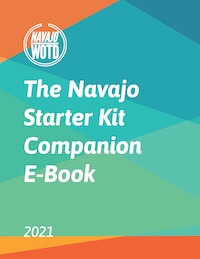One of the Navajo names for the Grand Canyon in Arizona is Tsékooh Hatsoh.
Here, we have the word tsékooh, which refers to a canyon.
The second word describes a big space, making use of the ha- and -tsoh particles.
The Grand Canyon, today, is a park under the protection of the US Federal Government. In the past, the US permitted mining and natural resource development in many of its tributaries. Historically, tribes in the area obtained salt from the canyon before modern heavy mining technology developed.
Several tribes in the Southwest US have traditions and practices associated with different parts of the Grand Canyon. The Hopi Tribe, for example, have many stories of ancestors and earlier groups that are said to have emerged near the confluence of the Little Colorado and Colorado Rivers.
Development in the area has been a sensitive topic since it has been affected by the Bennett Freeze – an order by the US government against any development or repairs of any type across nearly 1.5 million acres. This action had its roots in the Navajo-Hopi Land Dispute, which itself involves the designation of traditional borders and use as determined by the Federal government.
In an effort to take advantage of tourism in the area, the Navajo Government has promoted job creation and the economic benefit of a project known as the “Escalade”, which is mainly a planned gondola that takes visitors on a ride into Tsékooh Hatsoh.
The Skywalk is another tribal project by the Hualapai Tribe that faced similar opposition, but now allows visitors a view of the canyon via an extended ‘u-shaped’ platform that juts out from the canyon ledge.
Some older Navajo also made visits to friends and relatives in and around the canyon, often making the trip on horseback to places like the Havasupai Village on older trails. The Grand Canyon was always a hub of activity that goes back to the many tribes inhabiting the area.
